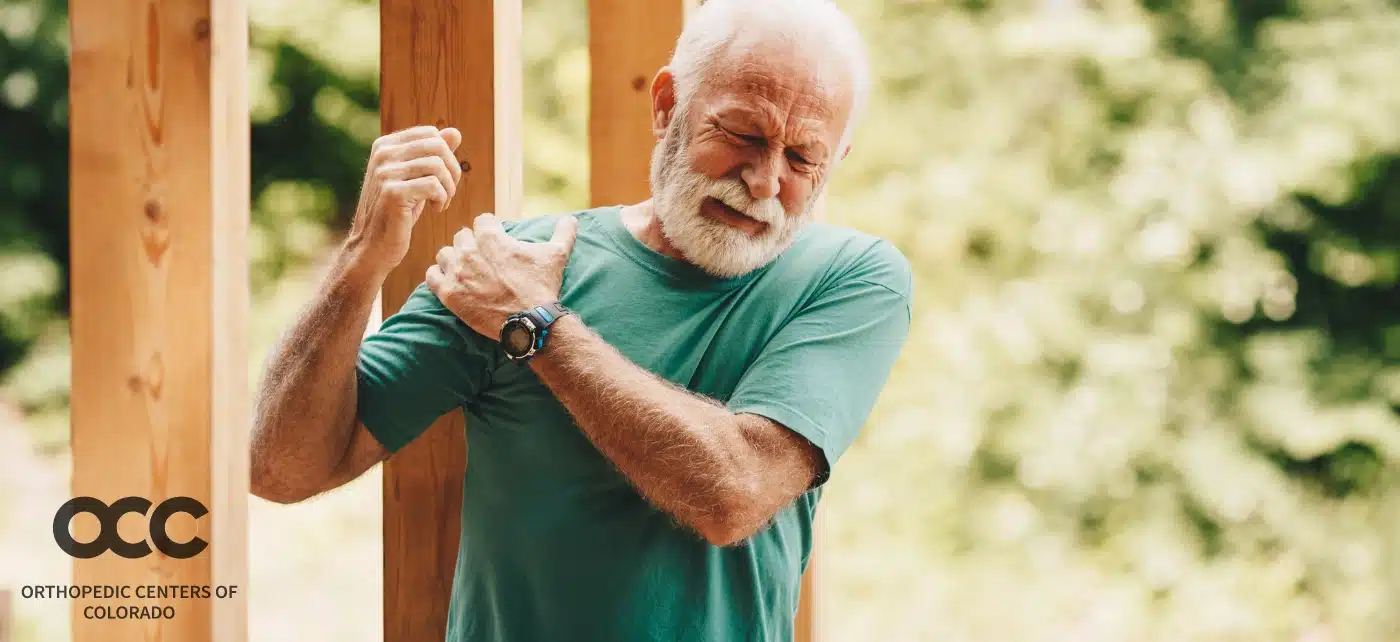Shoulder pain can mean many things, including any of these common shoulder injuries:
• Tendinitis of the shoulder
• Shoulder sprain
• Shoulder separation
• Shoulder dislocation
• Frozen shoulder
• Broken bone(s)
• Rotator cuff tear
The shoulder is a complex group of muscles, tendons and ligaments that hold together three bones: the clavicle (or collar bone), scapula (shoulder blade) and humerus (the upper arm bone). The rotator cuff is a group of tendons and muscles that surrounds the shoulder to provide support and flexibility.
Given all these moving parts, it’s no surprise that there are a wide variety of injuries that are sustained in the shoulder area. A rotator cuff tear is one of the most common of these injuries, and the risk of injuring your rotator cuff increases with age.
If you hurt your rotator cuff, you may have anything from a slight strain to tendinitis to a partial or full rotator cuff tear. Rotator cuff tears most often occur from repetitive motion activities over time or from overuse, but a collision or other sudden impact can also tear the rotator cuff. When this happens, other parts of the shoulder are likely to be damaged too.
Rotator cuff injuries can be mild or severe. If you’ve had a collision or other impact, it’s a good idea to get medical attention as quickly as possible. People with rotator cuff damage that was not caused by an acute injury often describe their pain as a deep dull pain, and it often comes with limited range of motion in the shoulder or weakness in the arm.
If your pain has developed over time or is limiting your range of motion or ability to complete daily activities, it’s time to see an orthopedic specialist. A comprehensive evaluation is key to prevent additional damage and get you on a path to recovery.
How is a rotator cuff tear diagnosed?
Your orthopedic specialist will start with a physical evaluation, examining your pain level, flexibility, strength and range of motion, among other things. Depending on your feedback and the evaluation, your doctor may recommend imaging, such as x-rays or an MRI to confirm a diagnosis.
The importance of treatment
It’s essential to get treatment to avoid a permanent reduction in range of motion or weakness of the shoulder joint. Treatment options will vary depending on the details and severity of your tear. Rest, therapy, anti-inflammatory medicine or steroid injections, and other conservative treatments may be enough for minor tears, but severe or “complete” tears typically require surgery.
Your orthopedic specialist will work closely with you to determine the right treatment that maximizes your recovery and restores an activity level that’s realistic for your individual situation. If viable, your surgeon may recommend arthroscopic surgery, which is less invasive and offers a faster recovery time.
Can you prevent a rotator cuff injury?
There are no guarantees, but if your lifestyle has you completing a lot of overhead motions, there are things you can do to minimize your risk and prevent some damage. Sports (such as baseball, tennis, volleyball), hobbies or work (painting, construction etc.) are all activities that use repetitive overhead motions.
Here are three things you can do to minimize your chance of injury:
Stretch: Before and after your activities, stretching is key for shoulder muscle flexibility and range of motion.
Build strength: By building up your other shoulder and back muscles, you can protect each individual muscle group. This is strength in numbers in action.
Rest: Taking a break from repetitive motions or mixing other motions into your routine can help to reduce strain on the rotator cuff.
If you’re having shoulder pain and think it might be a rotator cuff injury, getting a professional diagnosis is a good idea. Contact the shoulder and upper extremity experts at Advanced Orthopedics and Sports Medicine Specialists to schedule an appointment today.
















